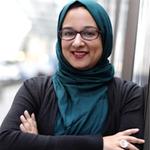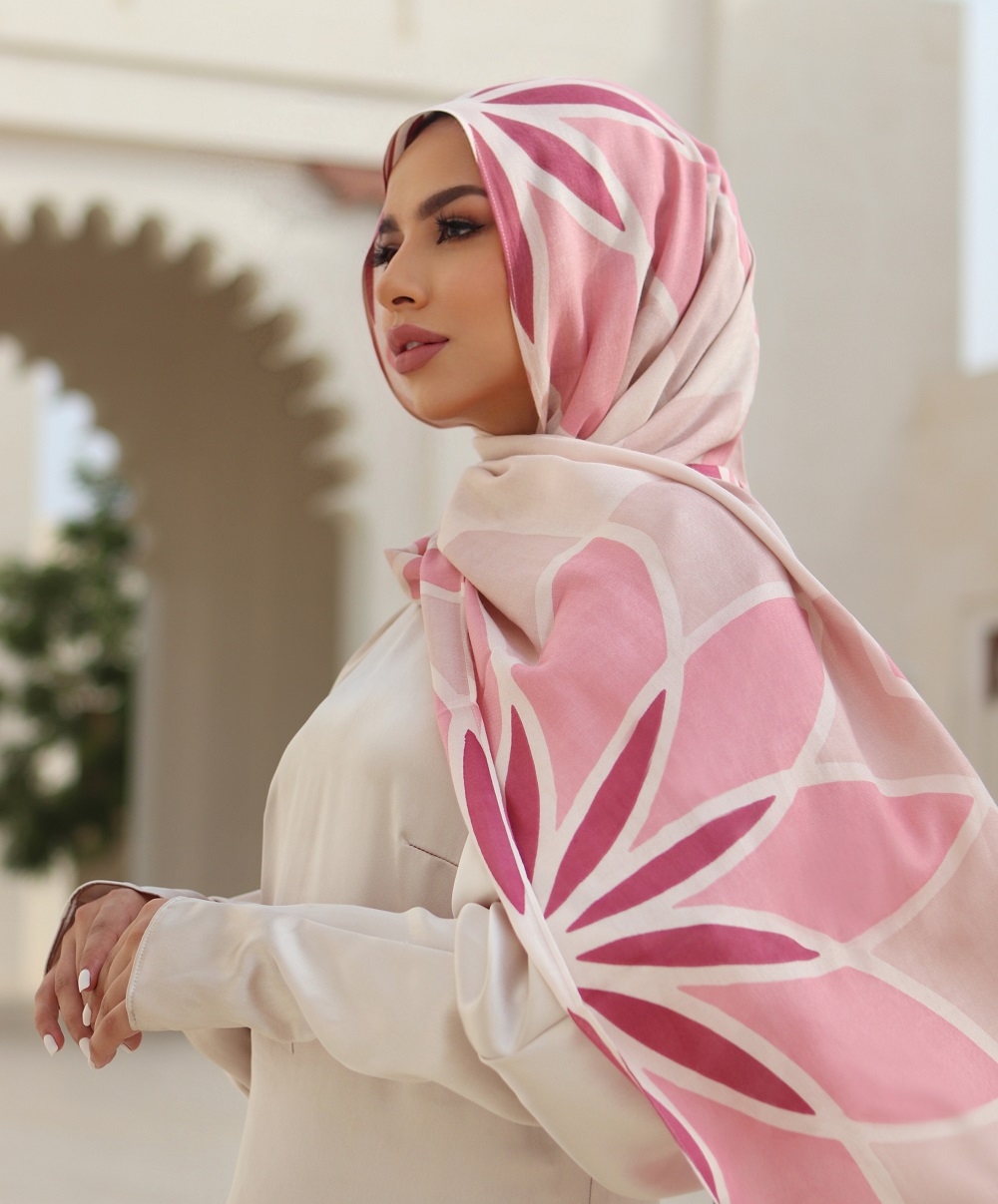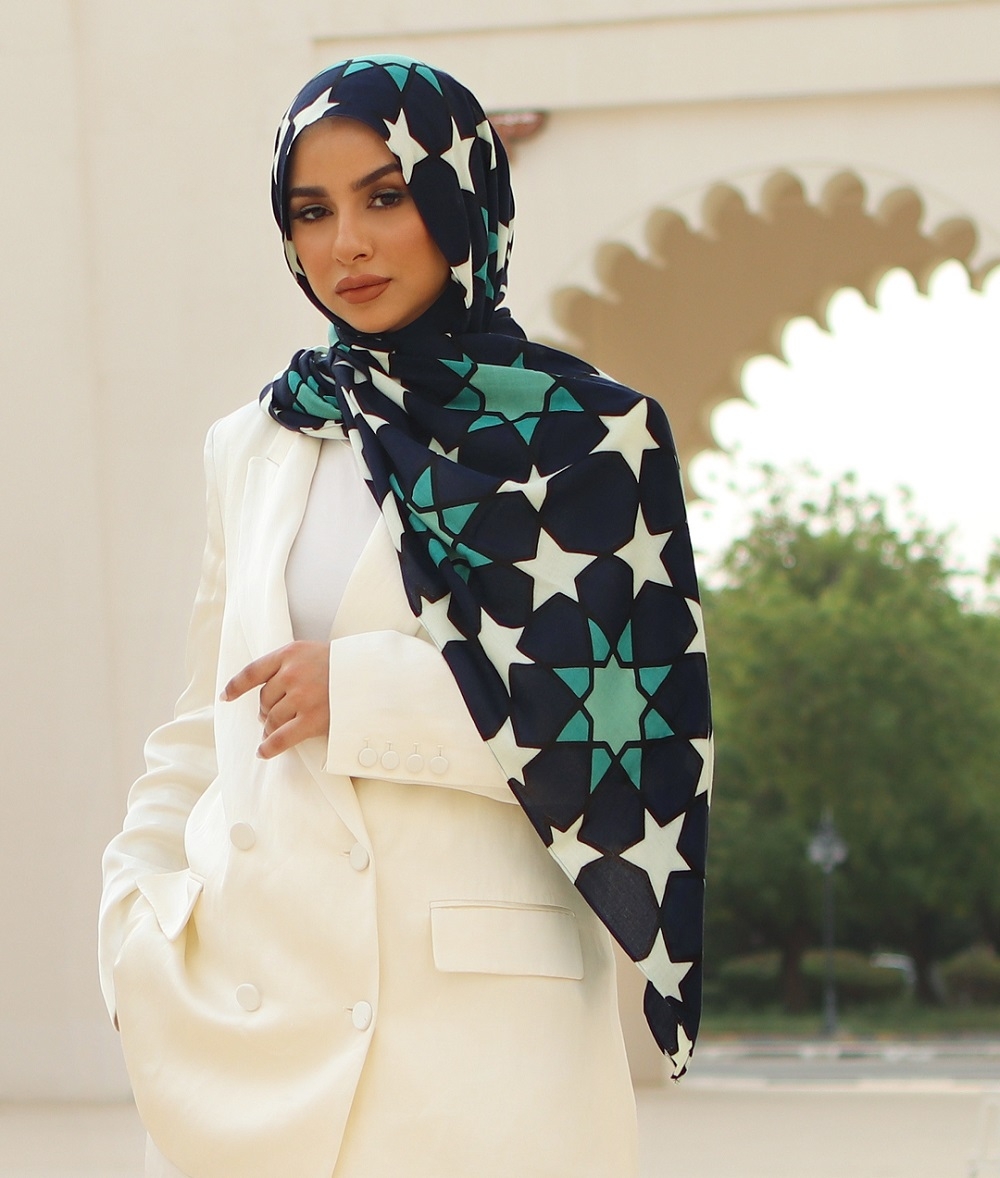Go Behind the Scenes of Our Latest Hijab Collection of Islamic Motifs – A Journey Through Time
Fashion
|
Aug 16, 2022
|
6 MIN READ
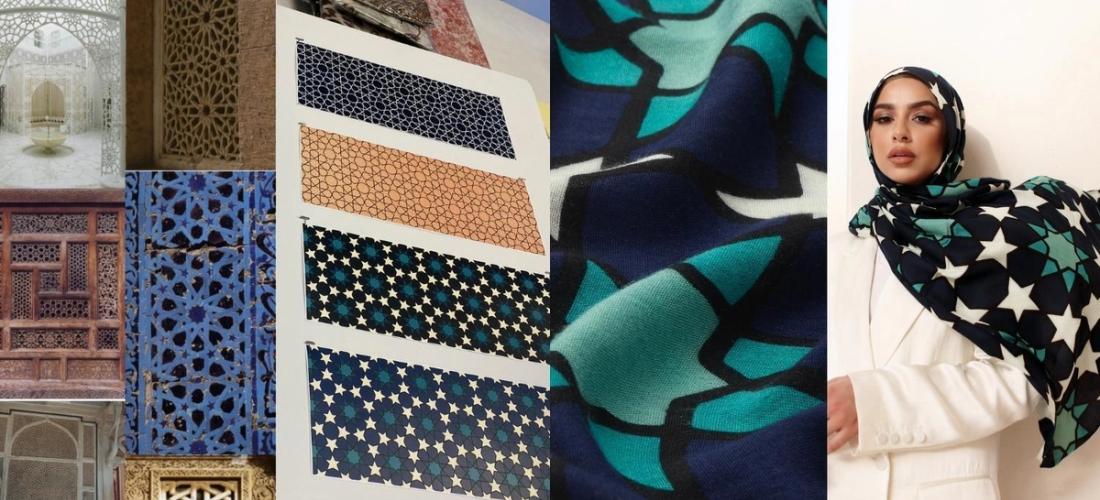
The eight-pointed star. Squares, circles and other geometric shapes interlaced to create intricate, repeating patterns. Floral and other botanical patterns. Stunning tessellated designs.
In the Islamic world of art and architecture, these (and other) motifs and patterns have been present throughout time and space to create beautiful displays of tilework, breathtaking mosque designs and awe-inspiring architectural elements. The beauty of Islamic art and architecture fills our eyes with wonder and our hearts with gratitude for Allah’s (S) glory.
And so, we turned to the world of Islamic art to draw inspiration for our latest Woven Prints collection – A Journey Through Time, which includes the Lost in Lagos, Ottoman Star, Mogul Empress and Path to Andalusia Hijabs. From thoughts in our heads to concept to design to the finished products, this collection is a love letter to the beauty of Islamic art and heritage around the world and how that beauty manifests in our lives and reflects our faith.
For Product Development Manager Elizabeth Walsh, this was the first time she created original artwork for a printed hijab collection. “I had a lot of good, creative warm-ups before taking this on, especially in working with Tech Designer Arlene Severet and our former Production Manager Lily Steele on our first Woven Print collection. But really, I was so grateful to Melanie (Haute Hijab’s founder and CEO) for letting me take a shot at designing this collection and give huge credit to Arlene, who helped me learn so much about the creative and technical process,” she says.
The idea for this collection was conceived in March 2021 as our production team was in the thick of creating our first Woven Prints collection, which launched in the fall of that same year. “We always knew we wanted to do some sort of Islamic, geometric print collection of hijabs, but we didn’t know yet how we wanted to do it. We hadn’t found what we were looking for in our research,” says Elizabeth.
Featuring Soha Taha @sohamt wearing our Mogul Empress Hijab.
Inspiration came as Melanie scrolled through her travel and Instagram photos and was struck by several repetitive motifs she saw and deeply spiritual experiences she had in parts of the Muslim world, which she shared with the production team.
“And then (HH’s former COO) Ahmed Zedan had all these photos he had taken of [Islamic tile work], and that also helped start the creative design process flowing,” says Elizabeth. One photo in particular that featured a tile with a gorgeous pink floral rosette on it helped spark the inspiration for our stunning Mogul Empress Hijab in this collection.
“After seeing the photo of that tile, I started digging into other Islamic architecture throughout the world, and I honed in on some patterns that were ubiquitous, like the Mogul Empress Hijab’s floral pattern and pink colorscape, which are reminiscent of so many of the gorgeous mosques across India and Pakistan,” says Elizabeth. The Jama Masjid in New Delhi (India) at sunset is bathed in gorgeous pinks and reddish hues, while the Badshahi Masjid in Lahore (Pakistan) is awash in carved red sandstone and marble inlay with curved repetitious points around the masjid boundary walls from which the Mogul Empress's design also draws inspiration.
Another omnipresent motif seen throughout the Muslim world is the chevron pattern that you see in the Path to Andalusia Hijab, as inspired by tilework from Alhambra in Spain,” says Elizabeth. “Then there is the Ottoman Star Hijab with the eight-point star design, which you see in Turkey and all over the Islamic world, but the colors for that hijab – blue, teal and cream – I pulled that from various Spanish mosques.”
How Designs and Concepts Change Through Iterations
In designing this collection, Elizabeth developed seven or eight initial concepts into mood boards based on various Islamic motifs, artscapes and architecture, for which she created four iterations each. The process itself is a testament to how much a design can evolve and change over time and through research and team input as well as the journey of how inspiration for hijab print design can be complex and deeply meaningful.
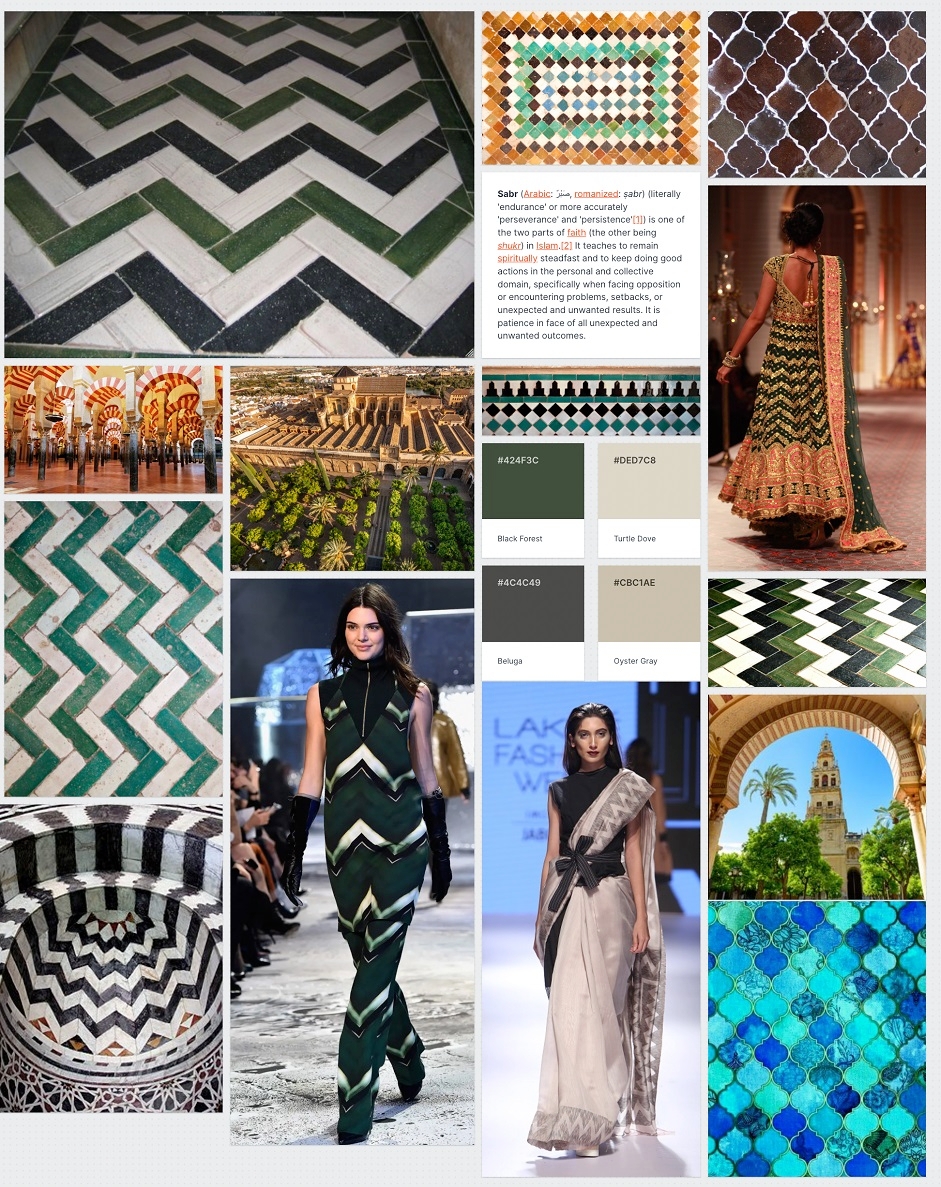
One of Production Manager Elizabeth Walsh's many mood boards for this collection.
So why so many design concepts and iterations? “When I present the different iterations and themes, I want Melanie to see what it’s based on and where these designs and colors are coming from,” says Elizabeth.
The process itself has several steps to reaching final designs: “I start by making black and white outlines of the designs, because it saves time. Instead of inking all of the designs in the beginning, Melanie, or whomever is involved in the design decision process, can pick a design before the color gets inked. You can see the pattern more clearly.
“It’s like having neutral walls and furniture in a house when you’re showing it so you can understand the design and flow better before your brain gets complicated by color,” says Elizabeth. “I put color references in the mood board. It’s easier to give input that way.”
After Melanie and the production team chose the designs they liked, Elizabeth went back and inked them with color, presenting each color iteration to the team. “We went back and forth until colors were finalized.” At each step of the process, the photos of different mosques, Islamic tiles and different geographic areas from the Muslim world were continually referenced to help guide the color (and design) process.
After all this comes the back-and-forth with the textile manufacturer, who takes the specs provided by the production team, which includes color references, the artwork itself and its scale as well as the type of fabric to use, and they make prototypes and samples until the final hijabs are approved by everyone.
Letting the Process Take You Where it May
“When you create something like this, you have something in your mind,” says Elizabeth. But sometimes that transforms into something else entirely, “which is hard to accept at times, because in my head I have a vision. But when I look at the completed hijab designs now, so many new feelings and inspirations rush in.”
Featuring Soha Taha @sohamt wearing our Ottoman Star Hijab.
Of the four hijabs in the A Journey Through Time collection, Ottoman Star stands out for Elizabeth for the design journey it's taken. Initially she had different, more muted colors in mind for the eight-point starry design, but the rest of the team envisioned a different color palette. “I changed the colors reluctantly, because it wasn’t the design I had in my heart. But now when I look at it, it’s so cool and has become something even deeper.
"I see the symbol of the dichotomy that some us feel about being Muslim and being American,” she says. “Like there’s the (eight-point) star design from the Muslim world, the five-point star intertwined with America, and the color that draws from Alhambra. When you wear it and the stars wash over you, it also feels very much a part of the U.S. Muslim space.”
We hope you enjoy this collection as much as we have in envisioning, creating and bringing it to life for you. Like the rest of our Bamboo Wovens, these hijabs are made from our iconic and sustainable bamboo fabric made from a considerably more earth-friendly process.
This is a collection of beautiful keepsake hijabs that pay homage to our Islamic heritage and the art and architecture of the Muslim world. We hope you feel the same love and honor in wearing these hijabs that we did in creating them. We hope you’ll love and cherish for these hijabs years to come!
Check back to the blog for upcoming posts dedicated to the story of each hijab from our A Journey Through Time collection and more!
Subscribe to be the first to know about new product releases, styling ideas and more.
What products are you interested in?

